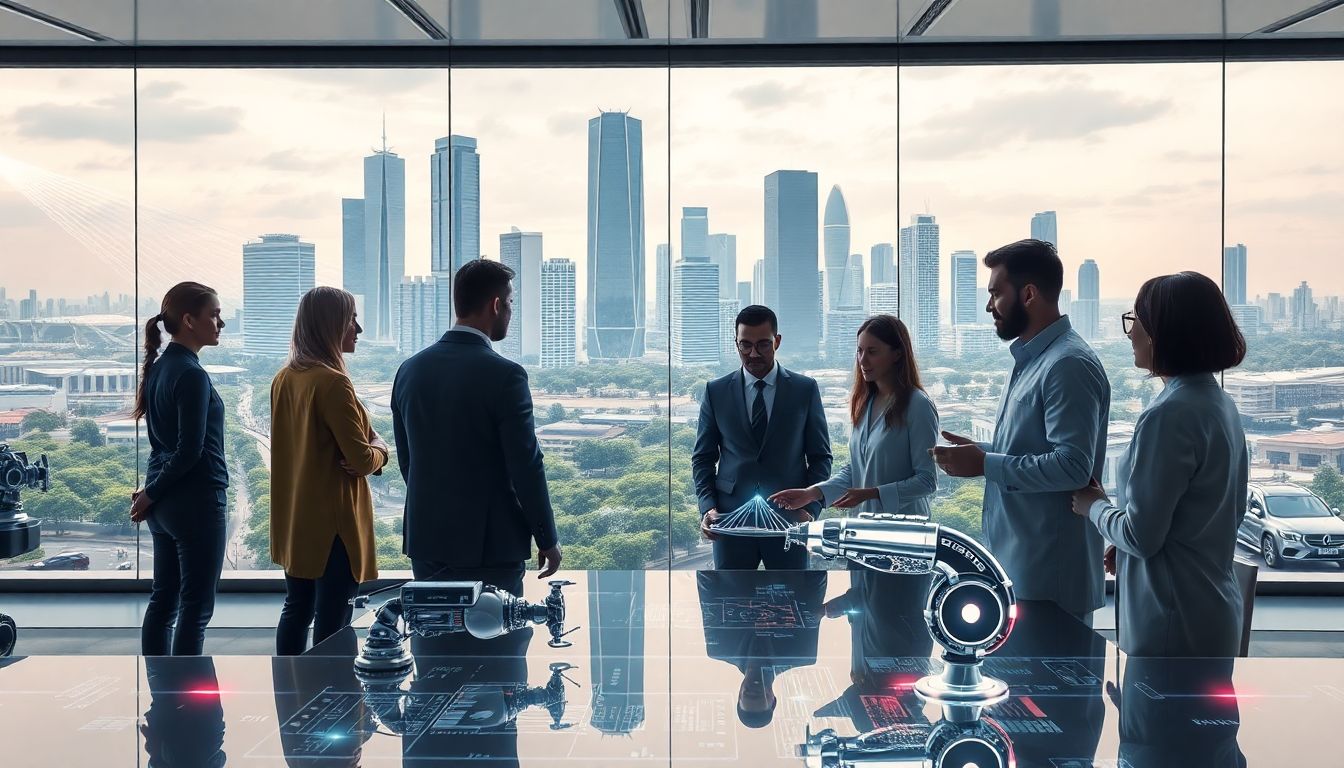Future Forecast: What Will Human-AI Collaboration Look Like in 2030?
Over the past decade, artificial intelligence has made huge leaps. From voice assistants to smart robots, AI has reshaped many parts of our lives. As these technologies grow smarter and more capable, understanding how humans and AI will work together becomes more important. We need to ask: what will this partnership look like in the year 2030? Will it bring new opportunities or pose fresh challenges? This article explores the future of human-AI collaboration—the tech, the ethics, and the society changes we can expect.


Future Forecast: What Will Human-AI Collaboration Look Like in 2030?
Introduction
Over the past decade, artificial intelligence has made huge leaps. From voice assistants to smart robots, AI has reshaped many parts of our lives. As these technologies grow smarter and more capable, understanding how humans and AI will work together becomes more important. We need to ask: what will this partnership look like in the year 2030? Will it bring new opportunities or pose fresh challenges? This article explores the future of human-AI collaboration—the tech, the ethics, and the society changes we can expect.
The Evolution of Human-AI Collaboration: From Automation to Partnership
Historical milestones in AI development
AI's journey started with simple tasks like basic rule-based systems. Then, it advanced into machine learning, where computers learned from data. Deep learning later made AI even more powerful, helping it handle complex tasks. These breakthroughs pushed AI from tools that performed routines to partners that understand context.
Current state of AI-human collaboration
Today, AI supports many fields. In healthcare, it helps diagnose diseases. In finance, it spots fraud and makes investment suggestions. Customer service has AI chatbots that handle common issues. These tools save time and improve accuracy, but they still rely on humans for judgment.
Projected technological advancements by 2030
Looking ahead, expect AI to grow even smarter. General AI, which can understand and learn almost like humans, might be here. Autonomous systems—like self-driving cars—may become common. Augmented intelligence will enhance human skills, turning people into super-performers. These innovations will turn AI from assistant to true partner in many sectors.
Industry Transformations Driven by Human-AI Collaboration
Healthcare
By 2030, AI will dramatically change healthcare. Diagnostic tools will detect diseases early, sometimes even before symptoms show. Personalized medicine will tailor treatments to each person’s DNA. Robots could perform surgeries with precision. For example, IBM Watson is already helping doctors find better cancer treatments. Future AI systems will make healthcare more accurate and accessible.
Manufacturing & Logistics
Factories will look very different. Smart machines will communicate, making production faster and more flexible. Predictive maintenance will cut downtime by warning about equipment failures early. Automated supply chains will adapt on the fly to demands. Big companies like Amazon already use robotic warehouses, but by 2030, these systems will be even more integrated and efficient.
Creative Industries
AI is no longer just for science and business. It now helps create music, art, and even write stories. Artists work with AI tools to generate new ideas faster. Experts believe combining AI with human creativity will spark new forms of expression. This partnership could revolutionize how we make and share art, movies, and music.
Education & Training
Future classrooms will use AI-powered tutors that adapt to each student’s learning speed and style. These platforms will teach skills faster and more effectively. AI-driven simulations will prepare students for real-world challenges. By 2030, lifelong learning will be accessible to everyone thanks to personalized AI support.
Ethical, Social, and Policy Considerations
Data privacy and security
As AI handles more personal data, safeguarding it becomes crucial. Hacks and leaks could put sensitive info at risk. Strong safeguards and transparency will be needed to keep data safe.
Bias and fairness
AI can reflect human biases, leading to unfair treatment. Developers must work hard to make AI fair and unbiased. If not, these systems could deepen social divides instead of closing them.
Regulation and governance
Laws about AI use will likely evolve. Governments may create new rules to ensure responsible development. International efforts, like AI ethics guidelines, could become standard. Clear policies will help balance innovation with safety.
Preparing society for AI integration
We must help people adapt. Reskilling programs and public awareness campaigns will ensure workers aren’t left behind. Society as a whole needs to understand AI’s benefits and risks to make smart choices.
The Role of Human-AI Collaboration in Addressing Global Challenges
Climate change and environmental sustainability
AI will help model climate patterns and optimize resource use. Smarter energy grids and waste management will cut emissions. This tech can be a key player in fighting climate change.
Healthcare accessibility
AI can make medical care more equal. Telemedicine powered by AI could reach rural and poor communities. Making healthcare affordable and accessible can save millions of lives.
Economic implications
Automation may change jobs, but it will also create new ones. By 2030, we’ll see demand for AI specialists, data analysts, and robot designers. Society must prepare for these shifts, ensuring growth benefits everyone.
Ethical AI development
Still, with all these advances, human oversight remains vital. AI should serve people, not replace their judgment. Implementing strong ethical standards will help keep AI aligned with human values.
Actionable Tips for Embracing the Future of Human-AI Collaboration
- Stay informed: Follow AI trends and breakthroughs.
- Build skills: Learn about AI basics and how it impacts your field.
- Support transparent policies: Encourage clear rules for AI use.
- Collaborate widely: Work across disciplines—tech, policy, and society—to develop responsible AI.
Conclusion
The future of human-AI collaboration in 2030 promises powerful changes. It brings the opportunity for better healthcare, smarter industries, and new creative ways to express ourselves. Yet, these benefits come with responsibility. Ethical questions, privacy issues, and societal impacts must be addressed head-on. By staying informed and acting wisely, we can shape a future where humans and AI work together smoothly. Embracing this partnership now is key to a safe and inspiring tomorrow.



 VARSHITHA
VARSHITHA